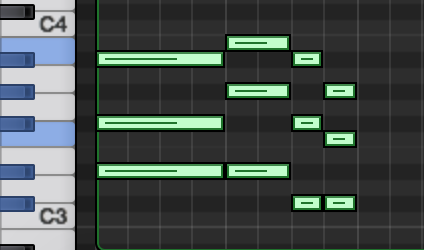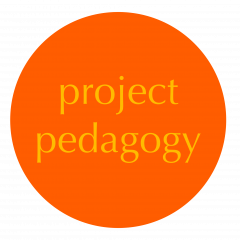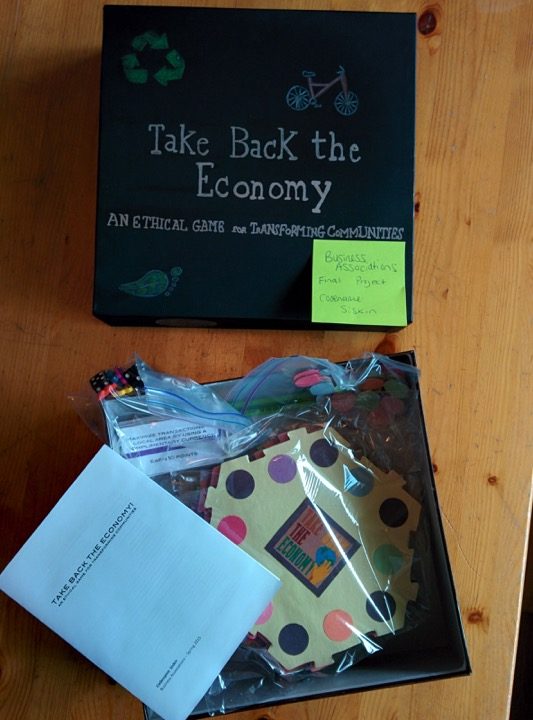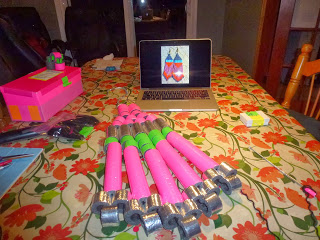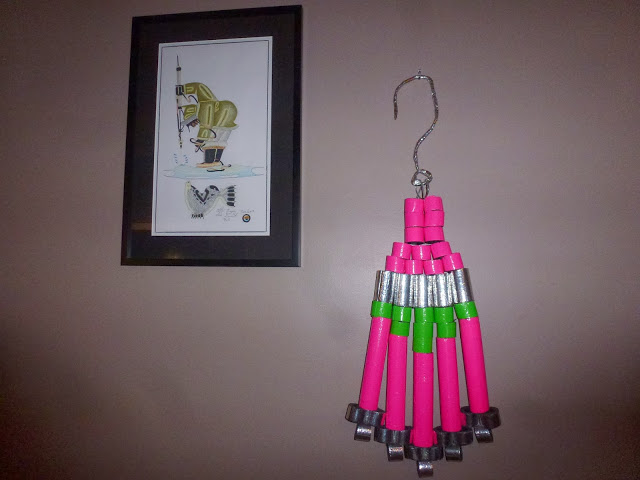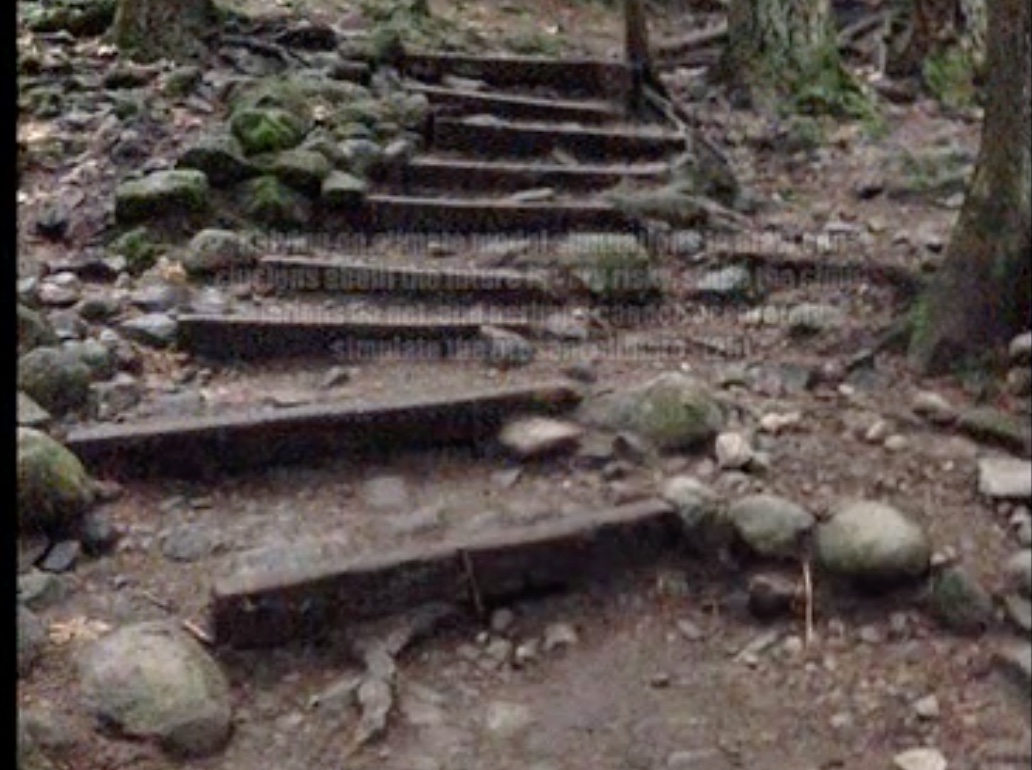In Law 315: Business Associations, Victoria Merritt and Kaitlyn Kastelic read J.K Gibson-Graham et al’s book, Take Back the Economy. The two friends had quite different responses to the book, and decided to work together to construct a “Word Cloud” painting that could capture some of those differences. Different clusters of concepts pop-out depending on the orientation in which the painting is hung. The piece, seen below, was accompanied by a scripted text of their conversations about both the book and their responses to it.
Author: Ellen Campbell
Take Back the Economy Game – by Daniel Jackson
Daniel Jackson created this game, “Take Back the Economy: An Ethical Game for Transforming Communities,” based on J.K. Gibson-Graham, Jenny Cameron, and Stephen Healy’s book Take Back the Economy. This project was submitted for Rebecca Johnson’s 2015 Business Associations class.

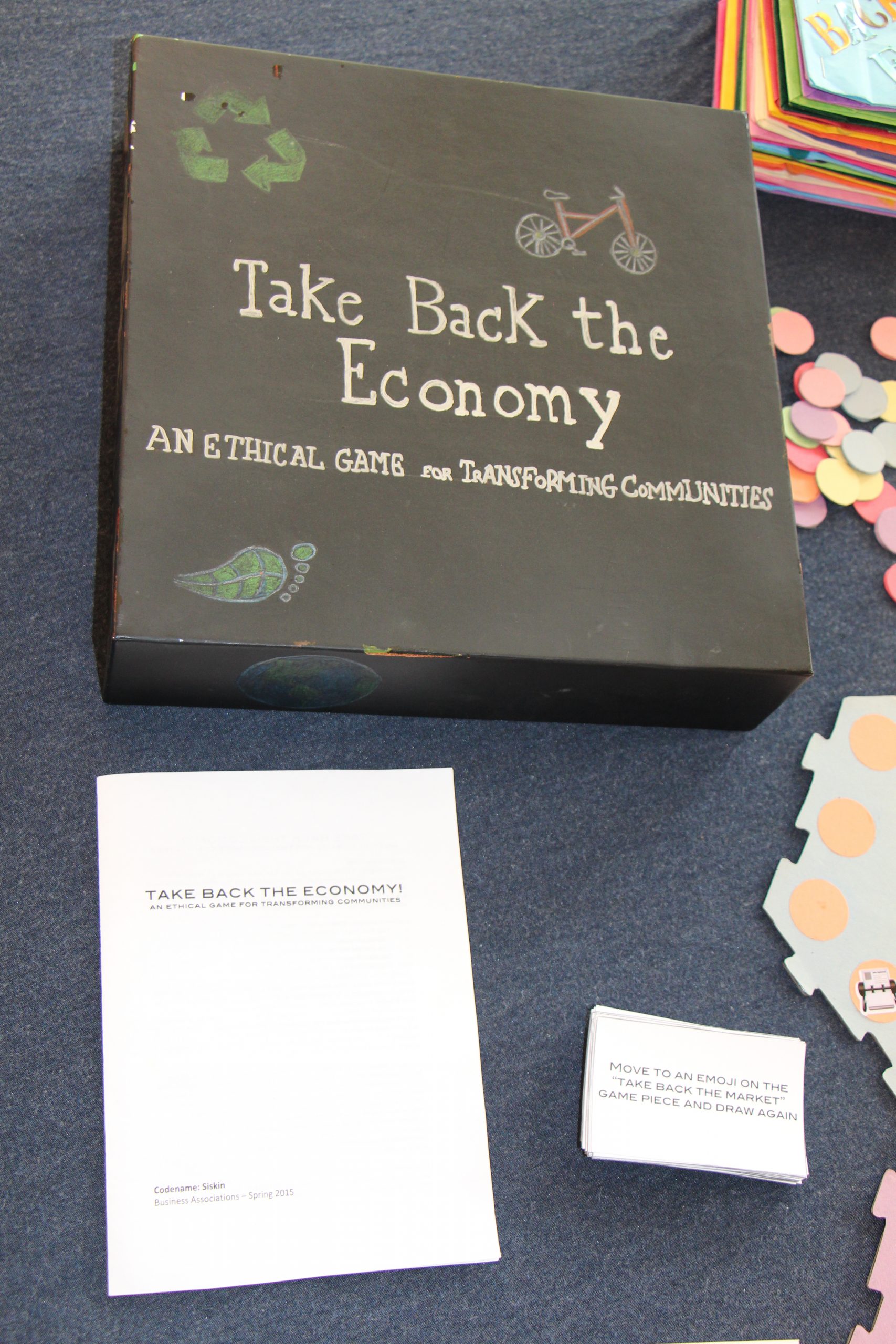
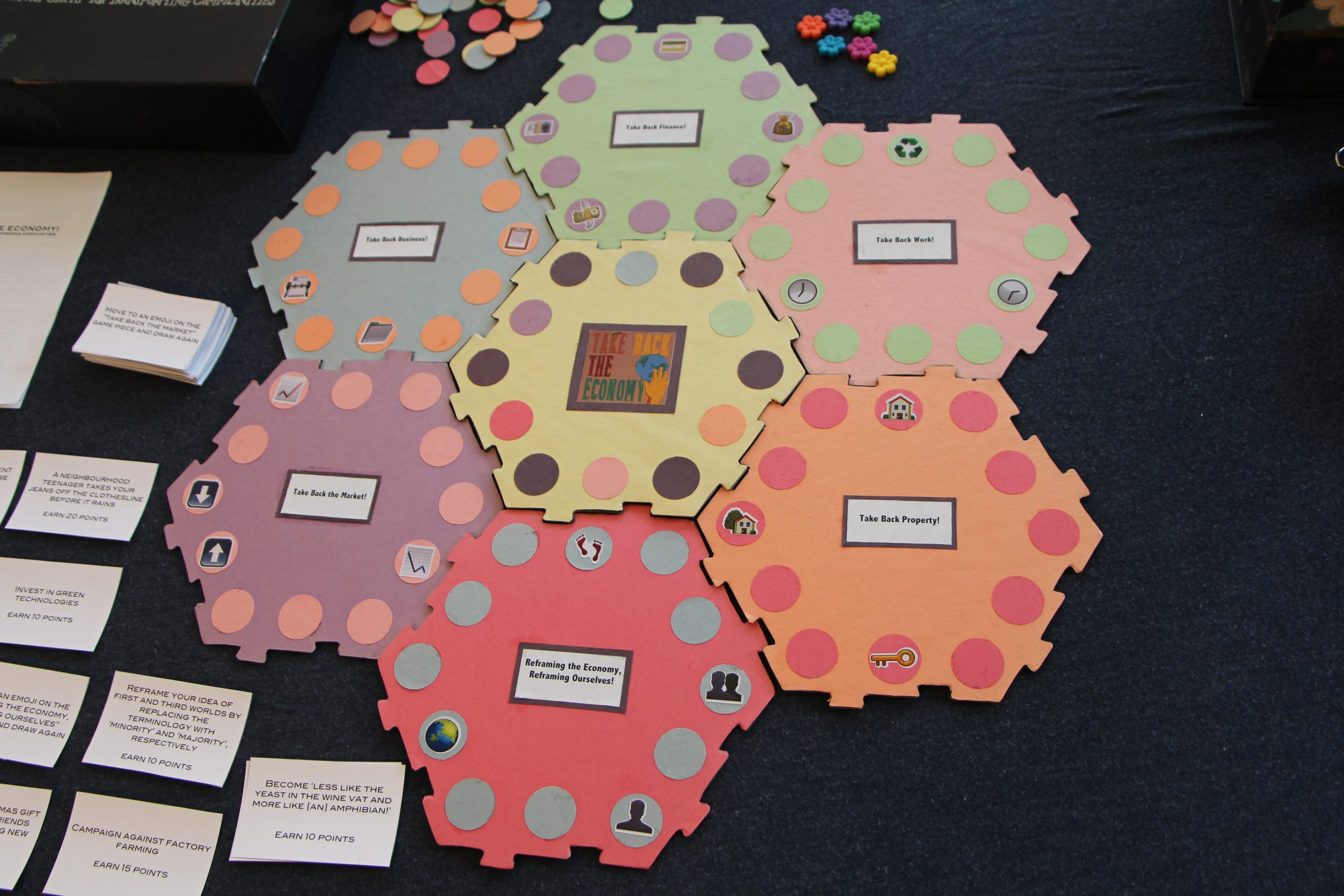
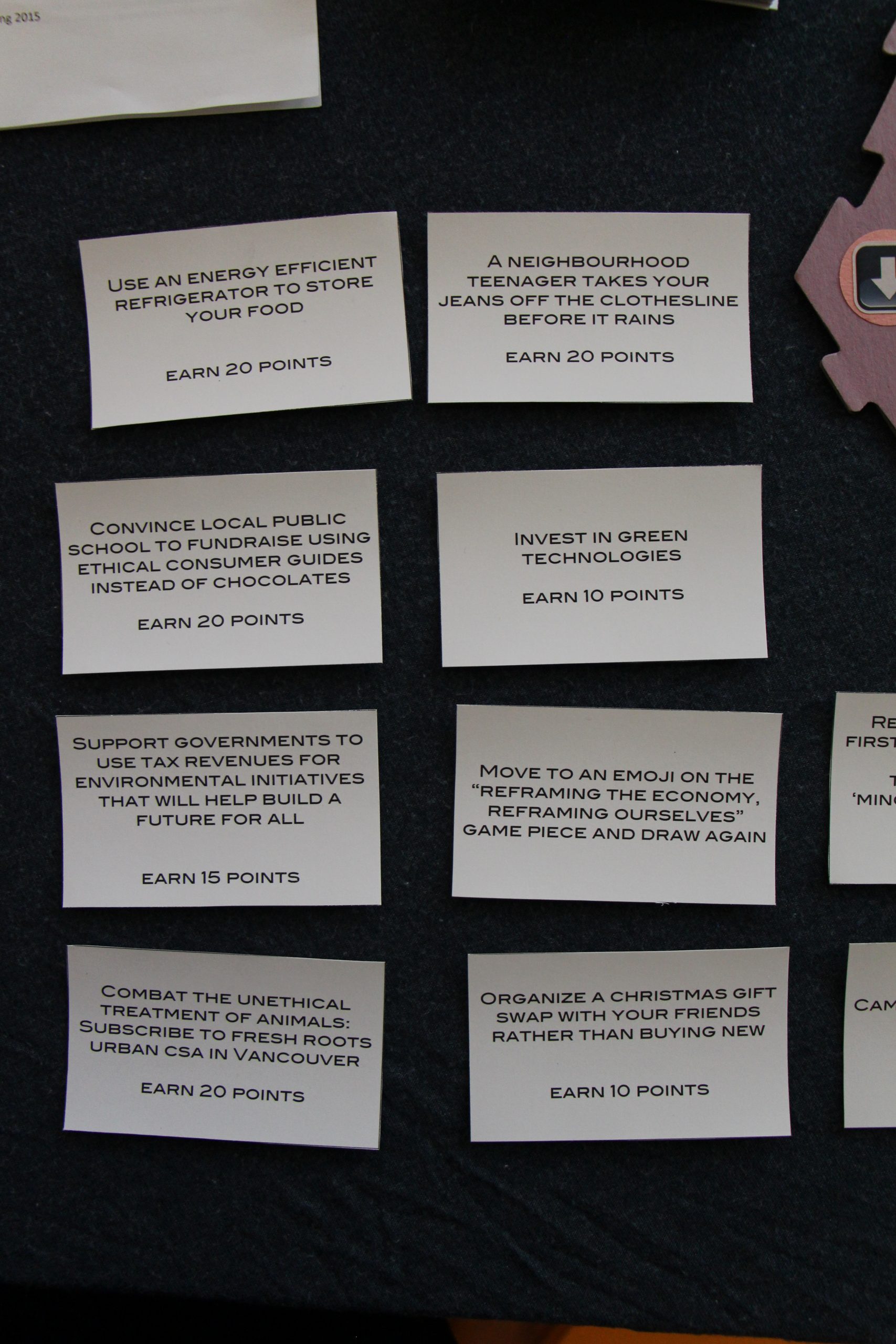
Photos and Video by Max Gross
People, Planet, Profit – by Unknown
Unknown created this game – People, Planet, Profit – for Rebecca Johnson. The purpose of the game reads:
“This board game is an attempt to bring concepts of the Community Economy, as discussed in J.K. Gibson-Graham’s book, Taking Back the Economy, into a more tangible place of exploration. The goal is that the board game can be a tool of reframing a way to unlearn much of what we have been taught about the . . . economy and imagine a new way of living, working and supporting one another in our communities.”




Money Game – by Unknown
Unknown created this game for Rebecca Johnson’s Business Associations course. Players earn points in different categories including “Money,” “Buy-In,” “Momentum,” and “Well-Being.” Players start at a level 8 for buy-in, $5 for money, and 5 for well-being. Players get character cards, including Warren Buffet, which have different advantages and disadvantages, including having an Extra Action/Turn, Losing $3, and gaining one buy-in point. Another character is the Koch Brothers, who gain an extra action/turn, lose momentum, but gain buy-in. Different action cards include “Privatize Hospitals” which means you gain $1 per turn in assets but lose wellbeing. Another action card includes Forming a Credit Union, which gains well being but loses $5. Other cards include the “Military Industrial Complex” which requires the “Defence Contracting” card and will allow you to gain $7.
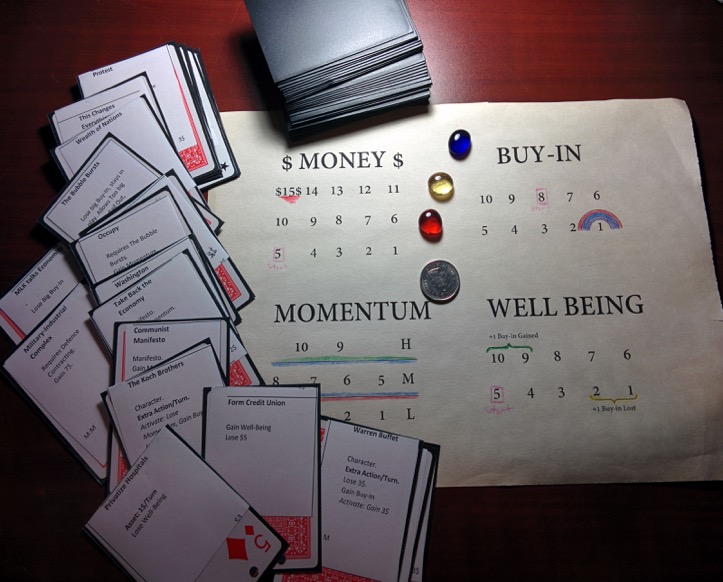
Gay Adoption Game – by Zachary Lee
“This was a game handed in for family law, for 40% of the mark. The question the students were asked to respond to was “How does law regulate your understanding of the family?” with the option given to answer the question in whatever format was best. This student wanted to write about obstacles that exist to gay men adopting in Canada notwithstanding that there are no formal barriers, in law, to same-sex partners, or single gay folk adopting. So he created that game that demonstrates that even though law is inclusive, there remain many barriers.
So you play the game and the goal is for you and your partner to get to the end where you adopt a baby. But you have to cross identity barriers and financial barriers and other kinds of barriers to get there. When you play the game you feel it in your body. You understand obstacles by playing the game that you would not understand in the same sense by just reading about them. It is fun to engage with the game but you never lose sight of the fact that this is a real struggle; the project makes the argument that homophobia exists in many of our practices around how we create families in Canada, even with the shifts in Family Law.
It was a stunning project and often when I am encouraging students to think about doing projects, I bring out this game for them to play to give them a sense of what some possibilities might be for them. It is one of the best ways that an essay question has ever been answered in Family Law.”

DIY Earrings – by Brittany Goud
Inuit Law and Film (2013) student Brittany Goud made this video for her final project.
Eyes and Ear(ring)s
The students in the Inuit Law and Film (Legal Theory Workshop) class once again produced a really rich variety of final projects. I was warned by one member of the class (Brittany Goud) that her proposed project would require my active participation. I agreed that I would be willing to give it (whatever it was…she was closed-mouthed about it).
I have now participated! I also took a few photos along the way to capture the ‘installation/participation art’ nature of it.
What Brittany had delivered to my office was a lovely pink box with instructions on the front (to go to a webpage and start watching before opening the box). I cheated and opened the box first, but I still could not figure out what would be required from a visual glance at the box or contents alone.
So…. the website is here:
https://www.youtube.com/watch?v=HQkfPVWXs0Q
If you go there, you will see a kind of DIY/How-To video for beading an earring. The box contained all the material I would need to make a giant earring (made out of foam tubing, covered by colourful duct tape.
As per the visual instructions (no words, only sound is the soundtrack from Nanook of the North), I laid out the material and began working…
 |
| …What it should end up looking like…. |
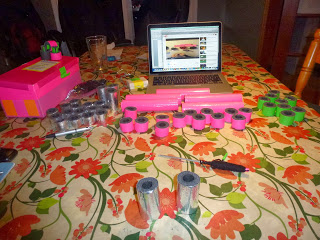 |
| Laying out the materials |
 |
| Half way there! |
|
|
| Success! I did it! |
I gotta say, it has been MANY years since I was a serious beader (I am now referring to my pre-teen and teen years at the Shuswap, where I spent the summers beading rings and necklaces), and I was a bit panicked about it…. would I be able to follow the video (particular since she use NO WORDS…)?
It was great fun.
Here is a photo of the completed earring hanging on the wall….it is alongside a drawing by Peter Ragee, that I bought in Iqaluit last summer.
Generally, there are two drawings usually there: the first (hanging) has the hunter waiting for the seal. The second of the companion drawings captures the moment when the hunter GETS the seal.
I took down the second in honour of Brittany’s project: in her video, while she uses the music from Nanook, she actively did not use any of the music where there was an ‘actual’ kill (keeping instead the part where the actors are on the hunt.) I am now thinking of my earring as ‘the kill’ (hahah). I think that is in part a kind of auditory reference to one of the articles we read during the term, Kulchyski’s “Hunting Stories” (double play, both on ‘hunting’, and on the search for stories).
Now I am left with the question: does my success with the earring mean I am a good student, or rather that Brittany is a good teacher? 🙂
Climate Change Photo Essay – by Jacqueline Nelson
Jacqueline Nelson created this video to display her photo essay on truths and perspectives through the lens of Climate Change.
The Train Song – by Joseph Mooney
Joseph Mooney wrote this song in the context of Law 315: Business Associations, UVic Faculty of Law, 2018 (taught by Rebecca Johnson). The song is an engagement with questions raised in J.K. Gibson-Graham et al, Take Back the Economy.
Listen Here:
The Train Song
Joseph Mooney’s Reflection on the Project
My interest in corporate law and business associations was first sparked following the financial crisis of 2008. I was fascinated (and somewhat disturbed) by the sheer size and leverage ratios of the investment banks primarily involved in the crisis. In reading “Take Back the Economy” and reflecting on many of the author’s points, I continually thought about the tension between the advantages that large scale economies present in terms of providing goods and services around the world, and the apparent need to moderate the size of major corporations or the few “major players” in a particular sector. The authors make a strong case that we should be thinking about the sustainability of consumption trends and the economies that have been set up to meet (or some might argue, create) those consumption demands.
In writing the “Train Song,” I was attempting to illustrate the problems not only with massive corporations, but also with normative presumptions of what the economy is. As such, the song touches on the feeling of helplessness that many people feel in regards to affecting the trajectory of a given national economy, particularly those born into lower socio-economic classes. In regard to the problems with large corporations, the song attempts to illustrate the problematic nature of an obsession with growth and the, in my opinion, outdated notion of what a director’s fiduciary obligation entails. Nonetheless, I felt compelled to include some ideas regarding the utility of the corporate form, as well as the need for some kind of regime that can govern the allocation of goods.
I found that getting some of these nuanced ideas out in verse was quite difficult however. Simply put, it’s hard to describe and discuss complex problems with great concision. It certainly led me to an increased admiration of the many great singer songwriters who have an uncanny ability to express so much with so little, such as Bob Dylan or Leonard Cohen. The song is already longer than I would have liked, but there is a great deal more that I wish I could have included, such as the fallacy of today’s economy being the result of natural forces, the role of un-paid labor and alternative economic interactions in allocating goods, as well as the long-standing existence of forms of association that are alternative from the classic capitalist forms.
I think that the linear narrative of the song is also something that made it difficult to express the convoluted world we live in today. In this sense the need to maintain an engaging story took away from my ability to accurately convey how long it can take to change entrenched ideas. Rather than simply disconnecting a box-car, becoming a source of positive change on a large scale can take longer than a life-time. “Take Back the Economy” even caused me to question the utility of such a large scale goal and instead consider a “turn-inwards” towards the local community level. It’s not that I think so highly of myself that I assume I can radically change the world, but I still like to entertain the idea that some very large scale changes in the dominant conception of what an economy is and how it should function may occur during my lifetime. The fact that this process occurs bit-by-bit, person by person and relies on an interplay between, if I may generalize, the law reflecting society’s priorities and society’s priorities being reflected by the law only serves to bolster the author’s call to action at a local level.
The project was a great way to engage in an a-typical way with some of the broader questions of policy, law and philosophy presented in “Take Back the Economy.” While I feel like there is a number of concepts I was not able to explore, it was still a very rewarding and enjoyable experience.
Reframe the Economy – by David Litner
David Litner created this rap for Rebecca Johnson’s 2017 Business Associations course.
Reframe the Economy
LYRICS
“Reframe the Economy”
(David Litner)
In order to take back the economy,
We must reframe, imagine it differently
Abandon this notion
That the economy is a relentless engine
That we can’t effect change, rearrange
Because we can make the change, rearrange
Chorus:
Reframe the economy to reflect our reality
A reality considering the environment and society
Not just the profit, acting monetarily
We can then be effective economic actors
Not just beset, overwhelmed non-factors
Ordinary people must understand
We can provoke manifest change
When we take matters into our own hands
[Chorus]
Like the trim tab of a huge ocean liner
Small actions can have big effects
An idea can spread rapidly
Reframing our sense of possibility
Unleashing new capacities
I too was cynical about the practicality
Of ordinary citizens altering the economy
But like Margaret Mead claimed
Small, committed groups of citizens can change the whole domain
One example from Take Back the Economy
Shows positive change sparked by the ordinary
Indigent women in Gujarat, India
Changed their fortunes thanks to SEWA
Now Gujarati women’s embroidery
Trends and adorns fashion garments globally
The women are suppliers, managers, and share-holders
In this not-for-profit company
Poor women reframed as skilled producing artisans
With operational principles that are socially just
Take back the economy as a space of ethical trust
So the economy is not simply
A large capitalistic body, incomprehensibly
We can have influence, we can have control
Conscious citizens can absolutely change the whole
[Chorus]
PROJECT PHOTOS

